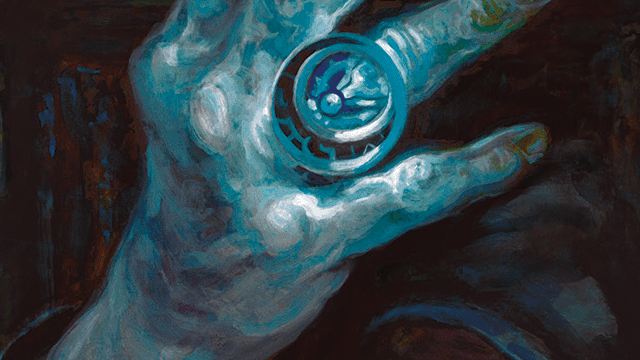The Artificer is the archetypal inventor of Dungeons and Dragons 5th Edition, and it plays the support role well. Infusions are its big mechanic and a huge part of its very high potency in party compositions. If you’re wondering what the best Artificer Infusions are, you’ve come to the right place.
Infusions are a mechanic unlocked at level two for Artificers. They learn four different recipes for magic items, which they can place in up to two nonmagical items of their choice. These buffs last until the Artificer dies, replaces the recipe with another one, or places an Infusion in another nonmagical item. As the Artificer gets stronger, they can learn more powerful magic item recipes and infuse more and more items with magical properties. This combos well with the Artificer’s ability to attune to up to five magical items—or six with the Armorer.
The best 10 Artificer Infusions in 5E, ranked
Infusions are strong when they are generically useful and unlikely to be replaced easily. While you can replace infusions as you level up, there are plenty of strong options that you’ll want to keep for your whole adventure.
This ranking cannot compensate for a party’s innate weaknesses, such as characters who don’t have Darkvision. In those cases, Infusions can be excellent ways to solve problems with specific characters. It is up to an Artificer to improve their party—and themselves—using this feature.
10. Replicate Magic Item—Amulet of Health

The Amulet of Health is a level 14 Replicate Magic Item option that sets your Constitution score to 19. It does need attunement.
Constitution is an ability score that everyone needs, and few can actively invest in. While many builds are comfortable getting to 16 or 18 Constitution, some Fighters or even Barbarians might have too many other feats to realistically pump CON. So, this can be a helpful plus-one or two to a Constitution modifier that would otherwise be hard to justify.
However, because it sets Constitution to 19, builds that are more set-in-stone can get diminishing returns from this magic item. If your party is full of 16 Constitution characters, for instance, this Amulet provides a plus-one to the modifier. That’s still worth considering—20 extra HP is 20 extra HP.
This is a universally handy midgame item that suffers only from success.
9. Homunculus Servant
The Homunculus Servant creates a homunculus for you. Homunculi are low-health servants that can channel your magic over a distance, similar to a Familiar.
Familiars are exceptionally useful in 5E, and the Homunculus is no different. By putting one of these tiny constructs in an ally’s pocket, you can cast healing spells like Cure Wounds across a battlefield.
Alternatively, the Homunculus gives all Artificers a reasonable bonus action in Force Strike, a range attack with your spell attack modifier to hit. Their solid Stealth proficiency and fantastic Perception is worth celebrating, as well.
Without many options for Familiars, outside of endangering your poor Steel Defender, the Homunculus servant is a passable way to get some of the Wizard’s utility under your belt.
8. Spell Refueling Ring

The Spell Refueling Ring allows a spellcaster to, once per day, restore a spell slot of third level of lower.
This attribute isn’t incredibly rare for classes. Circle of the Land Druids can recover spells in a similar way. The Wizard’s Arcane Recovery is perhaps the best reason to pick up the class.
However, some classes just don’t have that choice. Bards and Clerics, for example, usually have to deal with what they have. And that’s not good. Spells like Spiritual Weapon or Tasha’s Hideous Laughter are hugely influential, even if they’re low-level.
There are a handful of downsides to the Ring. The low level isn’t really bad, but it does prevent restoring level four or five spells—usually the spells you’re desperate for. It is also worded in a way that Warlocks can’t use it to replenish their spell slots.
Still, it’s a great way to get a pretty impactful class feature back on the board.
7. Enhanced Defense
The Enhanced Defense buff grants a plus one bonus to AC for a piece of armor or shield. This bonus increases to plus two at level 10.
The Enhanced series of Infusions—Arcane Focus, Defense, and Weapon—are all very strong in the early game. However, as your DM gives your party magical items, the infusions become less and less powerful. Of these options, Defense is both universally needed by the party and the least likely to be replaced. You can give it to non-magical armor or shields, after all.
That means anyone who doesn’t get an AC bonus can find one with this feat, or you can pump a frontliner’s AC to absurd lengths by giving one with magical armor a magical shield. Artificers get to pretty great AC without magical items, largely due to this infusion.
We also recommend Enhance Arcane Focus and Weapon, but be ready to tag them out for other Infusions as you grow stronger.
6. Resistant Armor

The Resistant Armor, when infused and attuned, grants resistance to one damage type. The choices are acid, cold, fire, force, lightning, necrotic, poison, psychic, radiant, or thunder damage.
This covers a pretty wide swath of damage types outside of physical damage. It also includes the nearly impossible-to-find force, psychic, and radiant damage resistances. With a Bear Totem Barbarian, you can guarantee you will only take half damage from every effect in the game.
This can be a very beneficial ability, especially if your party has access to good information. Since you can change the damage type whenever you infuse the armor, it’s child’s play to swap damage types. If you know you’re about to fight a Red Dragon, for example, one party member can avoid taking huge damage from the breath weapon.
5. Helm of Awareness
The Helm of Awareness prevents the wearer from being surprised and gives advantage on initiative.
Preventing surprise is rarely useful in 5E. A handful of enemies will do ambush tactics or drop in from stealth, but there are other answers to it. The Alarm spell, for example, can easily prepare the party for a night ambush.
The advantage on initiative is much more enticing. Giving this to the party Sorcerer can lead to a devastating spellcaster starting combat with Banishment or Wall of Fire. Giving it to a Paladin can lead to a gigantic damaging turn that turns the enemy Lich to dust.
Seriously, this is an effective way to get a high initiative that can prevent a combat from starting against your favor.
4. Mind Sharpener

The Mind Sharpener has four charges, each of which can prevent concentration from dropping once per day. It refuels by d4 charges per day.
Most Artificers don’t really care about this, which isn’t a great idea. Concentration spells are quite common among the Artificer’s spell list. Having a way to guarantee your saving throws land and your spell continues to affect the battlefield isn’t a bad idea.
However, perhaps more importantly, other classes aren’t as defensively blessed with defensive stats as the Artificer. Warlocks, for instance, have so many concentration spells and a reliance on Eldritch Mind to keep them afloat. By giving them the Mind Sharpener, the Artificer can guarantee that long-term concentration spells—such as Hex—stay active.
Especially early on, before many magic classes can get bonuses to Constitution saving throws, this is a life-saver for your fellow magic users. And even later, it’s worth considering.
3. Replicate Magic Item—Bag of Holding
The Bag of Holding provides a small pouch with a gigantic, interdimensional space inside. This space can hold 500 pounds with 64 cubic feet of room.
This innocuous bag is one of the few must-have magic items that make this list due to the sheer utility of the thing. If your party doesn’t have one, it is missing out on both carrying capacity and incredible means of stealth and espionage. A guard’s body or two can disappear quite easily within this, for example. Key items will have a place to hide during routine inspections.
Hopefully, your party will find a copy of this thing and no longer need it. But, until they do, this is a critical recipe to have for buying and selling goods, lifting heavy key items, and turning even the lowest Strength Rogue into a powerhouse of carrying.
2. Replicate Magic Item—The Cloak and Ring of Protection

The Cloak of Protection—and, similarly, the Ring of Protection—provides a plus-one to AC and saving throws, which stack with all other sources.
These simple magical items are almost necessary for surviving on the frontlines as an Artificer. A plus-one to AC and saving throws seem low and unnecessary, but every bonus counts. With these two magical items, the average Artificer goes from somewhere around 26 AC to 28. And their saving throws get an additional 10 percent chance to succeed across the board.
The fact that these magical items stack and are so simple to note down and use prevents forgetting about them and guarantees usefulness at every point in an adventuring day. And nothing says you can’t give a copy to your Monk so they can see what having decent AC looks like.
1. Replicate Magic Item—Winged Boots
Winged Boots are an option with Replicate Magic Item that gives flight to the user for a rather long time per day. Winged Boots are the best infusion available for most parties in the game.
Flight is a required aspect of 5E for melee combatants. A Paladin that can’t fly risks being countered by a single cast of a spell or just by anything that has wings.
The ability to give anyone four hours of flight per day is enough to handle all encounters in a day with time to spare. For many classes, this is a gigantic buff to speed as it provides a direct line of fire to any target.
And, for non-melee classes, Winged Boots are still impressively strong. For example, a Druid can use these boots to fly into the air and prevent melee combatants from smashing their noses in.
This will take up many of your Infusion slots, and that’s completely acceptable. It’s like permanently casting Fly on however many party members you want.












Published: Oct 14, 2023 09:41 am